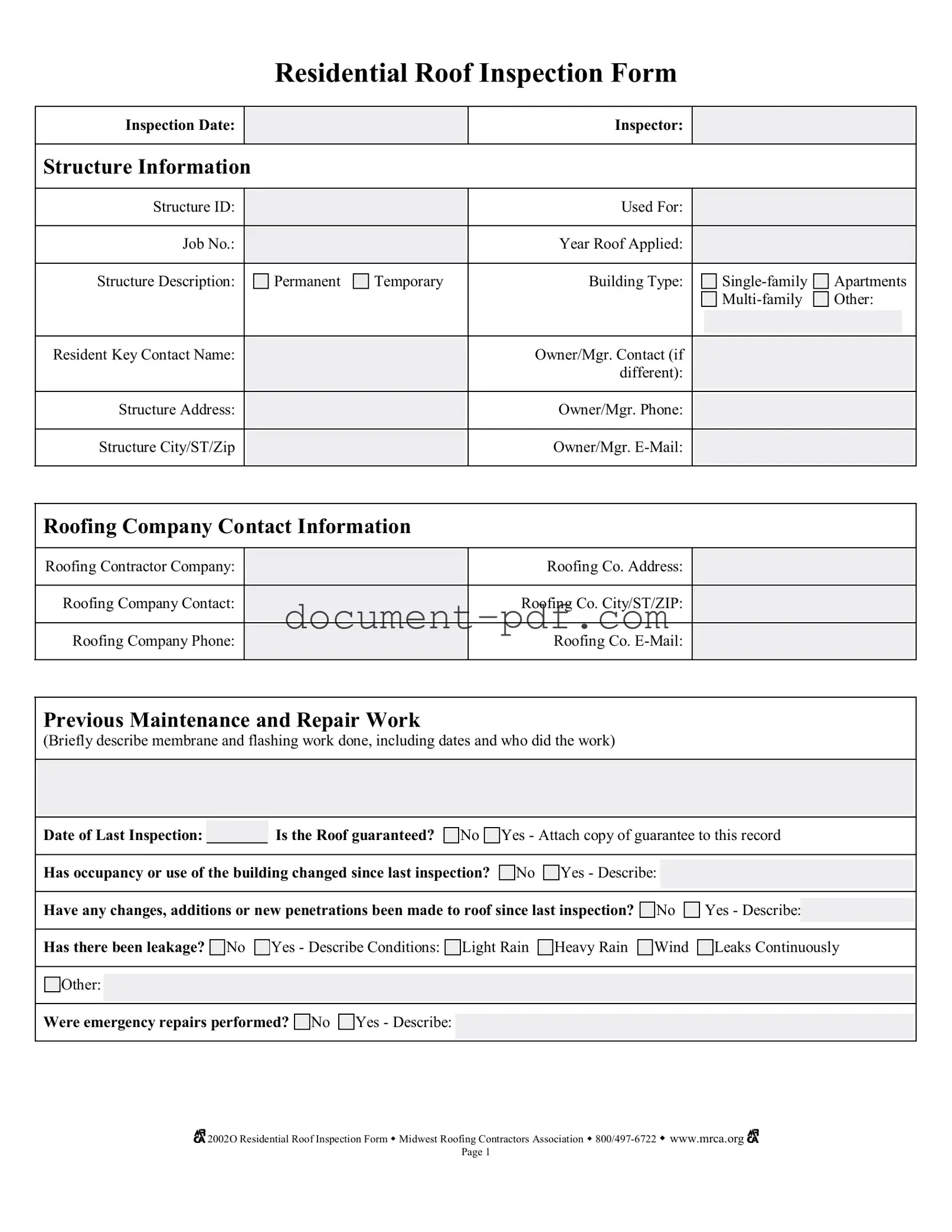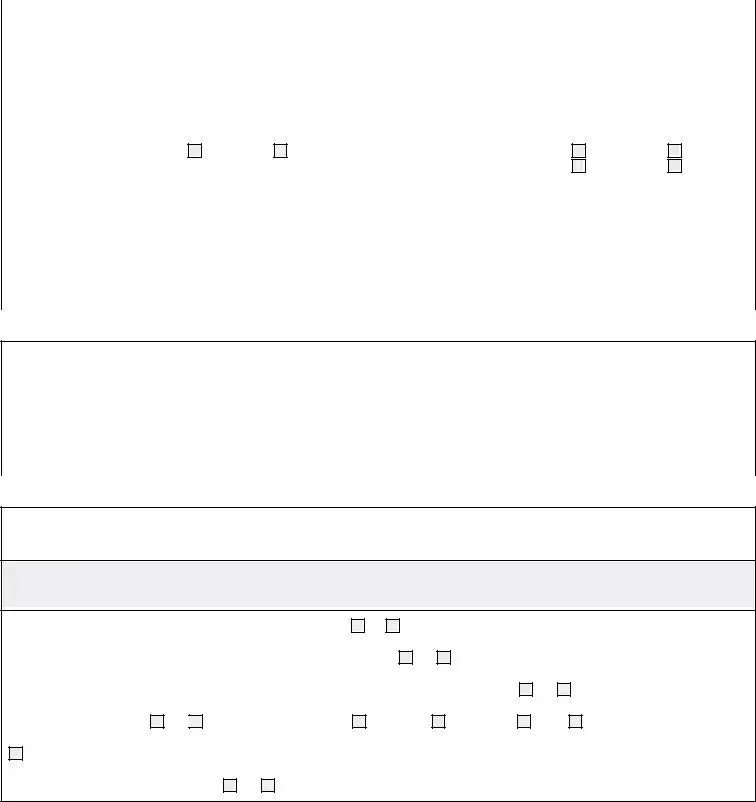The Roof Inspection form shares similarities with a Home Inspection Report, which is commonly used during real estate transactions. Both documents assess the condition of a property, focusing on structural integrity and safety. A Home Inspection Report typically covers various aspects of the home, including the roof, foundation, plumbing, and electrical systems. Like the Roof Inspection form, it documents findings and may recommend repairs or further evaluations to ensure the property is safe for habitation.
Another related document is the Property Condition Assessment (PCA). This report is often used by investors or lenders to evaluate the condition of a commercial property. The PCA includes a detailed analysis of the building's physical condition, including the roof. Similar to the Roof Inspection form, it identifies issues that require immediate attention and outlines maintenance recommendations to protect the property's value.
The Maintenance Log is also comparable to the Roof Inspection form. This document tracks all maintenance activities performed on a property, including roof repairs and inspections. Both documents emphasize the importance of regular upkeep and help maintain a historical record of work completed. This information can be crucial for future inspections or when determining the need for major repairs.
Additionally, the Warranty Inspection Report bears resemblance to the Roof Inspection form. This report is often generated when a new roof is installed and includes a review of the installation to ensure compliance with warranty requirements. Both documents assess the roof's condition and may highlight any issues that could void the warranty if not addressed promptly.
The Insurance Claim Inspection Report is another document that aligns closely with the Roof Inspection form. This report is created when a property owner files a claim for roof damage due to events like storms or accidents. Similar to the Roof Inspection form, it evaluates the roof's condition and provides evidence to support the claim, ensuring that all necessary repairs are documented for insurance purposes.
The Roof Maintenance Checklist is also akin to the Roof Inspection form. This checklist is used by property managers or maintenance staff to perform routine inspections and ensure that all aspects of the roof are in good condition. Both documents help identify potential issues before they escalate, promoting proactive maintenance and extending the roof's lifespan.
Understanding the significance of a Durable Power of Attorney form guide is essential for anyone planning for future decision-making in sensitive matters. This document not only designates an agent to act on your behalf but also ensures that your financial and health-related preferences are honored, especially during times of incapacity.
The Building Inspection Report is another document with similarities. This report is typically generated by a building inspector during a comprehensive evaluation of a property. Like the Roof Inspection form, it assesses various components of the building, including the roof, and provides recommendations for repairs or maintenance to ensure compliance with safety standards.
The Leak Detection Report also shares characteristics with the Roof Inspection form. This document is specifically focused on identifying and documenting leaks in a roofing system. Both reports emphasize the importance of addressing water intrusion issues and provide a detailed account of the conditions observed, which can help guide necessary repairs.
Finally, the Roof Replacement Proposal is similar in that it outlines the condition of the roof and provides recommendations for replacement. This document often follows an inspection and includes estimates for work to be done. Like the Roof Inspection form, it serves as a critical tool for property owners to understand the current state of their roofing system and make informed decisions about future investments.


 2002O Residential Roof Inspection Form w Midwest Roofing Contractors Association w
2002O Residential Roof Inspection Form w Midwest Roofing Contractors Association w 

 2002O Residential Roof Inspection Form w Midwest Roofing Contractors Association w
2002O Residential Roof Inspection Form w Midwest Roofing Contractors Association w 

 2002O Residential Roof Inspection Form w Midwest Roofing Contractors Association w
2002O Residential Roof Inspection Form w Midwest Roofing Contractors Association w 

 2002O Residential Roof Inspection Form w Midwest Roofing Contractors Association w
2002O Residential Roof Inspection Form w Midwest Roofing Contractors Association w 

 2002O Residential Roof Inspection Form w Midwest Roofing Contractors Association w
2002O Residential Roof Inspection Form w Midwest Roofing Contractors Association w 